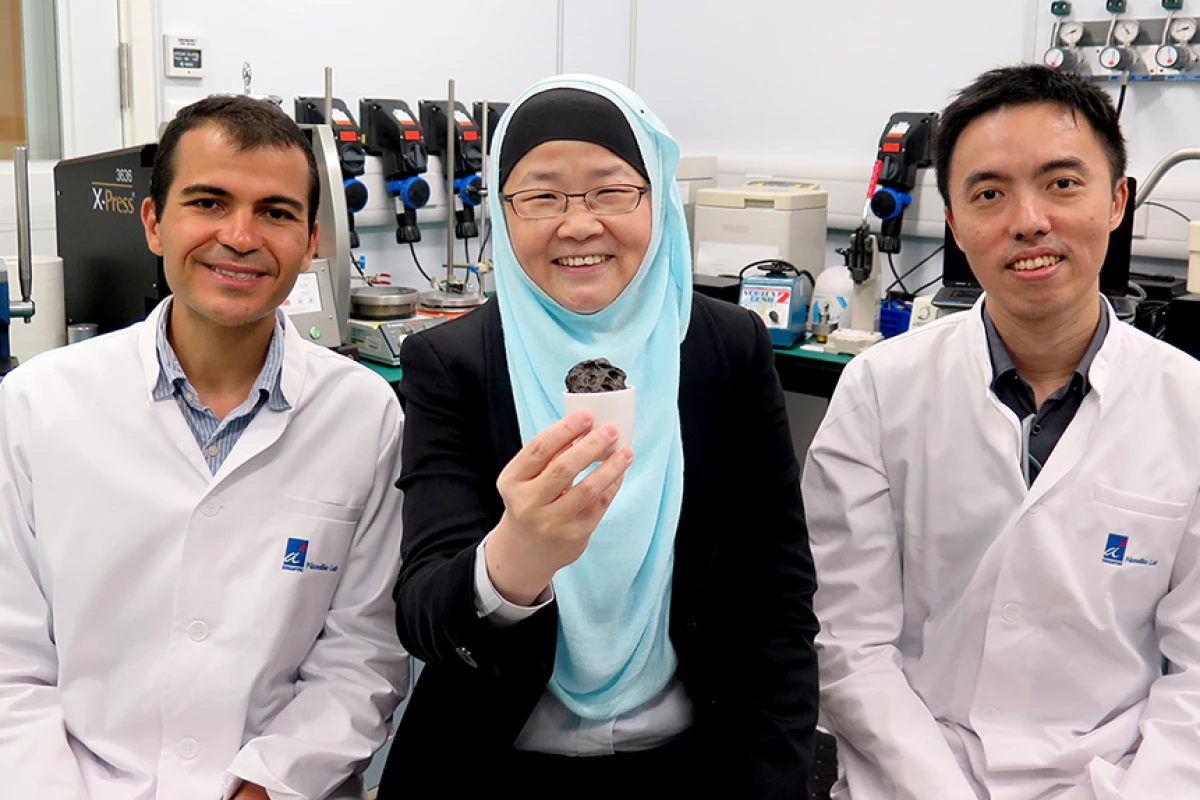Today's lithium batteries consist of a cathode, an anode, and a liquid electrolyte that carries lithium ions back and forth between them as it charges and discharges. Lately, scientists have been looking into what more solid versions of an electrolyte might bring to the party, particularly when it comes to safety. Scientists in Singapore are now reporting a new type of semi-solid electrolyte that shores up the safety of a lithium-sulfur batteries, which hold huge, untapped potential when it comes to energy storage.
The prospect of a working, reliable lithium-sulfur battery (rather than the lithium-ion chemistry that is currently the norm) is a hugely exciting one for researchers in the field. This is because they can hold up to five times more energy per weight, but a major stumbling block has been the far shorter lifespan they offer, with the materials often quickly deteriorating and breaking apart.
So scientists are investigating new battery architectures that can overcome this problem, with some promising breakthroughs being made of late. These have come via reimagined battery components that include hybrid cathodes, completely solid electrolytes and new bridging bonds that give the sulfur particles "some space to breathe."
Now scientists from Singapore's A*STAR’s NanoBio Lab are putting forward another solution, based on what they describe as a hybrid quasi-solid electrolyte. This novel electrolyte was created using a "cupcake method," where metal precursors and sucrose are dissolved in water, which is then heated to take on a brown cupcake shape.
Heating this cupcake then leads to the formation of a liquid-infused porous membrane, made up of highly conductive and chemically stable sheets. Using this semi-solid, 3D stack of sheets as the electrolyte allows good contact with the cathode and anode, but allows it to stay stable during charging.
“Hybrid quasi-solid electrolytes comprising both liquid and solid components have emerged as a practical compromise to obtain safer batteries while maintaining good performance," says Professor Jackie Y. Ying, who led the research team. "However, the high resistance of the solid component has thus far limited the performance of such batteries. To overcome this, we have reengineered the microstructure of the solid component. Our solution eliminates electrolyte leakage, and is thermally and mechanically stable.”
The team demonstrated this at a range of voltages and reports that the battery showed a high capacity, fast charging and discharging capabilities and overall, "among the highest known performance achieved by lithium-sulfur hybrid quasi-solid batteries." The team believes this unique architecture could be applied to other types of lithium batteries, too.
“Our 3D sheet-based framework was found to be crucial for optimal battery performance," says Ying. "Moreover, our system demonstrated outstanding stability under extreme temperatures. These results illustrate the excellent potential of our sheet-based structure as a framework for other semi-solid lithium batteries.”
The research was published in the journal Nano Energy.
Source: A*STAR




